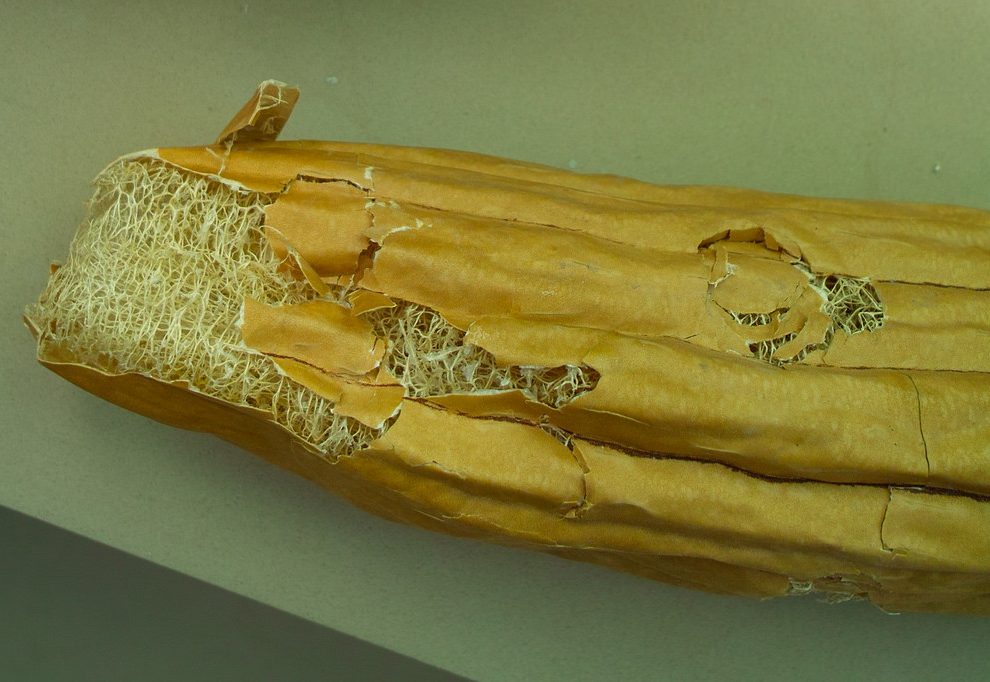Photo Credit: Flickr user: Jakukyo Friel
Loofah is a squash that grows very easily and is completely edible when young. It is similar to zucchini (courgettes). However, as loofah ages, the outer skin becomes crackly, dehydrates and the interior webbing hardens, leaving the great scrubbing tool we know.
Loofah is probably best known as a bath scrubber and it works excellently to exfoliate skin. It’s most wondrous results are often for pedicures and foot scrubbing, destroying or preventing calluses after a summer of barefoot hijinks. However, it is a bit harsh for facial use or delicate skin.
Loofah can also be used as a pot scrubber to replace your commercial non-scratch scrubbers, and they are tough! When you have an extra difficult scrubbing job, you can confidently use loofahs and even toss them after particularly nasty jobs if they don’t come clean and not feel at all guilty. Loofahs as biodegradable and can go directly into your compost.
A large bath loofah can cost $10-20 for a simple sponge. Growing them can be cents per loofah.
Just like synthetic sponges, the texture of loofah (lots of nooks and crannies) can harbor bacteria, so can sponges, scrubbers, towels and anything else we use for cleaning. The issue is an environment that traps moisture, rather than the material itself. So, either clean your loofah with a 5% bleach solution or, toss it after a month or so. Toss it immediately if it develops any off / mildewy or moldy smell, same as any synthetic sponges. To prevent this, wring out the loofah after each use and ensure it doesn’t sit in any water.


